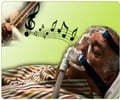Rap music is glorifying the illegal use of drugs say researchers at the University of California.
Rap music is glorifying the illegal use of drugs, according to a new study by researchers at the University of California.
After sampling 341 lyrics from the most popular songs in rap between 1979 and 1997, the research team found that there has been an alarming six-fold increase in references to drugs in recent rap songs.The researchers said that their study is a warning to young people who tend to emulate rap artistes and are ’already at risk and need to get a positive message from the media’.
’Positive portrayals of drug use have increased over time, and drug references increased overall,’ study author Denise Herd, associate dean of students at the School of Public Health, said.
’This is an alarming trend, as rap artists are role models for the nation’s youth, especially in urban areas. Many of these young people are already at risk and need to get positive messages from the media,’ she added.
Herd and her colleagues analysed 341 lyrics from the most popular rap songs between 1979 and 1997. During that time, references to drugs increased sixfold, and there was an increase in songs featuring positive attitudes toward drugs and the consequences of drug use, and an increase in references of drug use to signify glamour, wealth and sociability.
In addition, there was a significant change in the types of drugs mentioned in rap songs.
Advertisement
The study found that drug references in early rap songs - ’White Lines’ by Grandmaster Flash, ’Crack Monster’ by Kool Moe Dee and ’Night of the Living Baseheads’ by Public Enemy - often depicted the destructiveness of cocaine and, particularly, of crack, its freebase form.
Advertisement
These findings indicate ’a shift from cautionary songs, such as those that emphasized the dangers of cocaine and crack, to songs that glorify the use of marijuana and other drugs as part of a desirable hip-hop lifestyle,’ Herd said.
’This is alarming, because young children are exposed to these messages. I don’t think this is a story we as a society want them to absorb,’ she added.
Herd urged parents to monitor their children’s listening, and to educate themselves on the terms being used in popular songs.
The study is published in the April issue of the peer-reviewed journal Addiction Research and Theory.
Source-ANI
SPH/M







